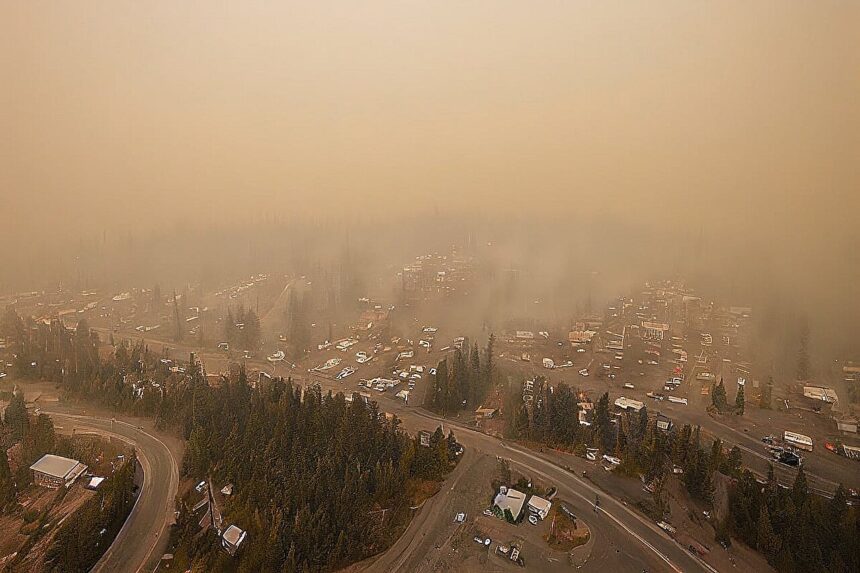Wildfires are not only devastating due to the destruction they cause but can also inadvertently increase the risk of flu and COVID-19 outbreaks, according to a new study. The study, published in the journal PLOS Climate, highlights how the smoke from wildfires can drive people indoors, creating conditions that are conducive to the spread of infectious diseases.
The research team, led by senior researcher Giulia Pullano from Georgetown University, analyzed mobile phone data tracking people’s visits to various indoor and outdoor locations across the United States. They focused on the wildfire season in Oregon and Washington in 2020, using air quality data to identify the counties most affected by wildfire smoke.
During the wildfires, counties in Oregon saw a 14% increase in indoor activity, while Washington counties experienced a nearly 11% increase. Major cities like Seattle and Portland also saw a surge in indoor activities, further increasing the risk of infectious disease spread.
Computer models used in the study showed that packing extra people indoors during wildfires could significantly increase the transmission of respiratory diseases like influenza and COVID-19. However, the researchers also found that wearing masks indoors could help limit the spread of these diseases.
The study suggested that even a modest increase in mask-wearing (10%) could reduce the peak incidence of diseases during wildfires. In heavily impacted areas like Washington County, Oregon, and Yakima County, Washington, masking rates above 50% may be necessary to effectively mitigate disease transmission.
The researchers emphasized the importance of public health experts being aware of this increased infection risk when wildfire smoke drifts into their region. They recommended warning people about the potential risks and promoting the use of masks indoors to prevent the spread of respiratory diseases.
As extreme weather events become more frequent due to climate change, public health strategies need to evolve to address not only the environmental impact but also how people adapt and react to emergencies. By understanding and planning for these behavioral responses, public health officials can better protect communities in a warming world.
In conclusion, the study highlights the interconnected nature of environmental disasters and public health risks. It underscores the importance of proactive measures, such as mask-wearing, to mitigate the impact of wildfires on the spread of infectious diseases like flu and COVID-19. This research provides valuable insights that can inform public health policies and strategies in the face of increasing climate-related challenges.







